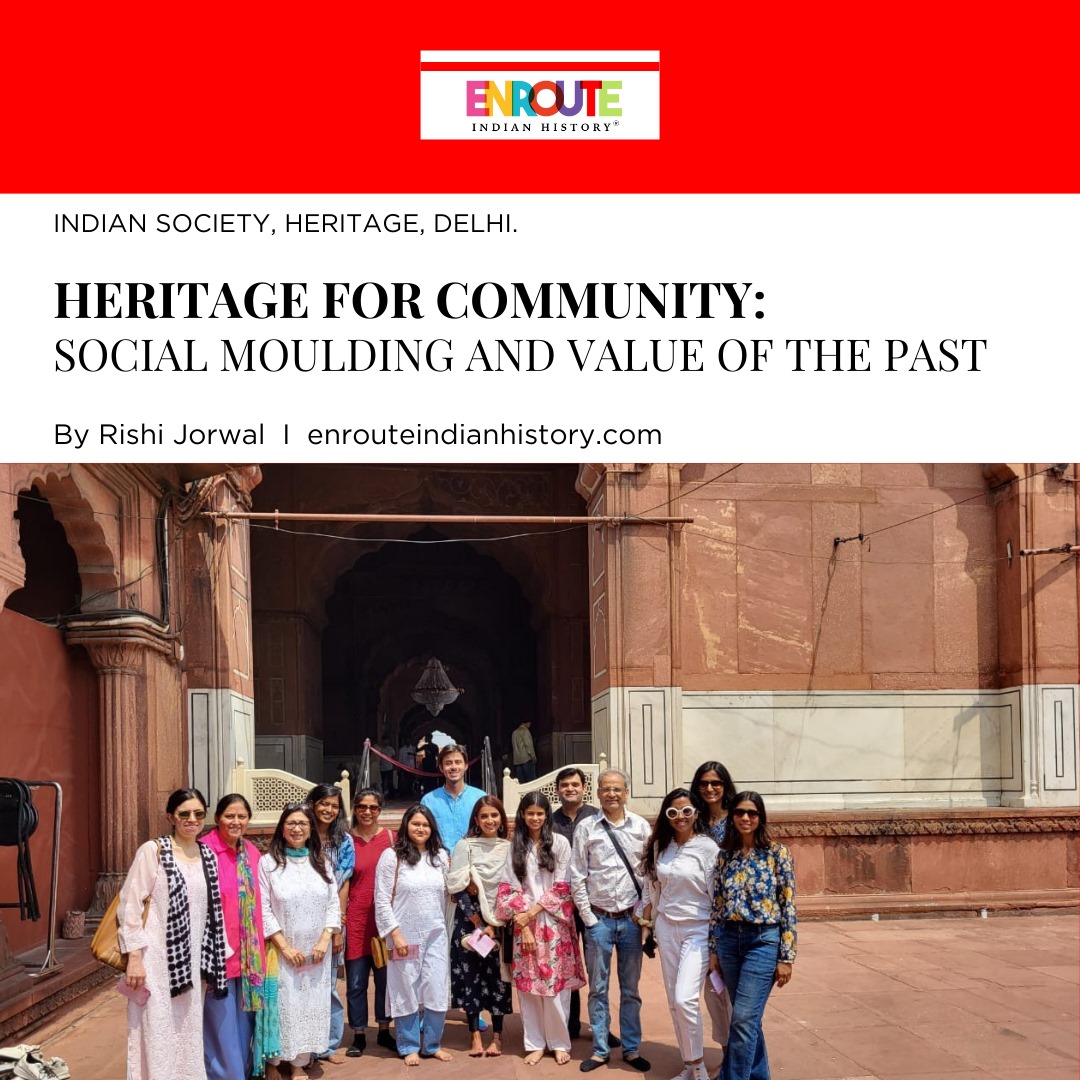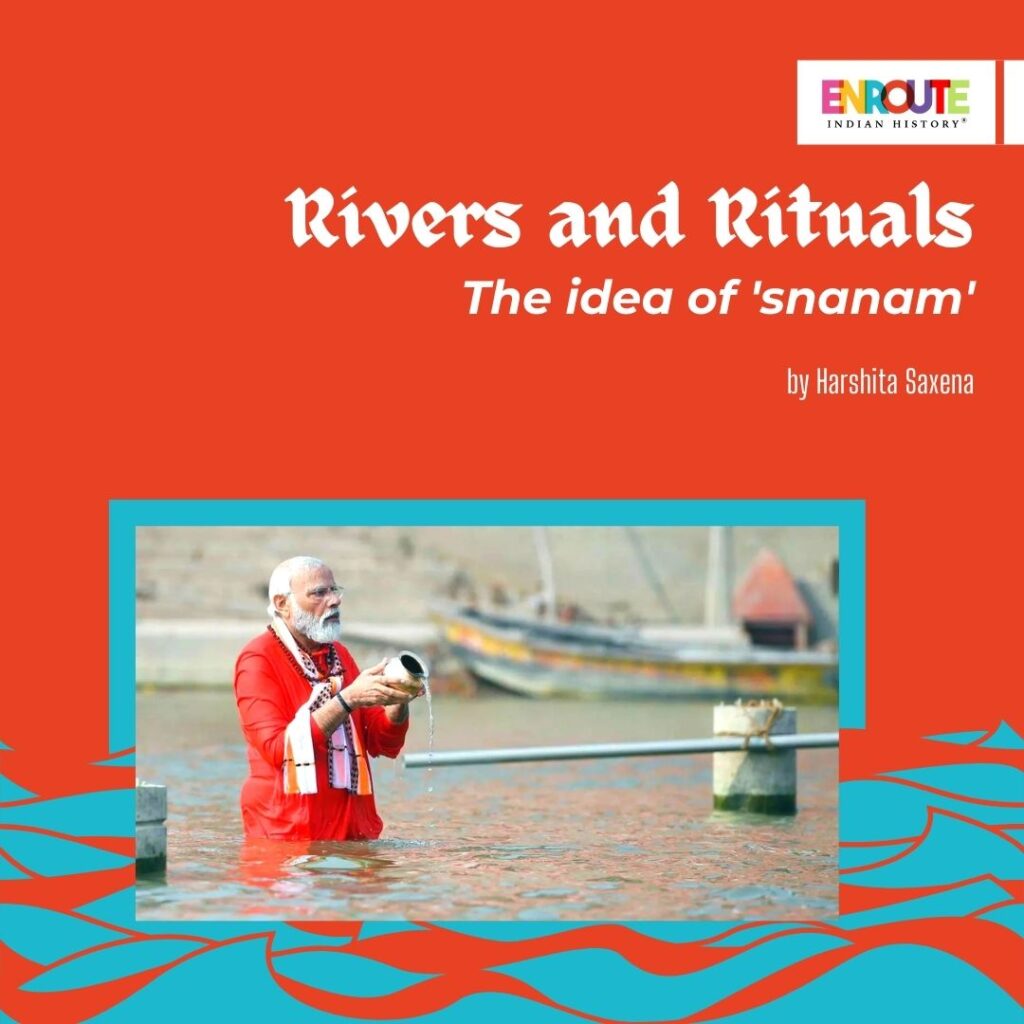
Rivers and Mythology
The duality of the river, as the destroyer and the preserver, is evident from myths, rituals, and religious practices in different cultures. The dynamic nature of the rivers as opposed to static water, makes it suitable for purification purposes or for rituals of cleansing (holy baths).
The Nadi-stuti Sukta (praise of rivers) of the Ṛig Veda identifies 7 sacred rivers of India, namely Ganga, Yamuna, Saraswati, Sidhu (now, Indus), Narmada, Kaveri, Godavari, Krishna, Tapti and Brahmaputra. The Hindu mythology aggrandizes water as “the elixir of immortality.” In Vedic texts, water is referred to as ‘apah’, and is considered to be purifying in a spiritual context. Water bodies, the rivers, in particular, are regarded as the source of life in tangible and mythical senses and particularly manifested as a source of feminine energy or Sakti. These places of manifestation of life, power, and piety are known as tirthas (sacred places), and thus we have places of worship (temples, or religious fairs) alongside these tirthas. These act as the “gateway to the unknown” realm of spirituality, according to Chris C. Park (1994), and are mostly linked to water attributes.

Image 1: Hindu God of Water, Varuna Deva
Holy Baths in Hinduism: History & Significance
‘…Whatever sin is found in me, whatever wrong I may have done, if I have lied or falsely sworn, waters remove it far from me…’ (Rig Veda, Mandal 10, Hymn 9). Puranas too, appreciate a holy bath in sacred rivers before any offerings are made by the devotee because that would enable the devotee to bank spiritual excellence and have peace for their ancestors.
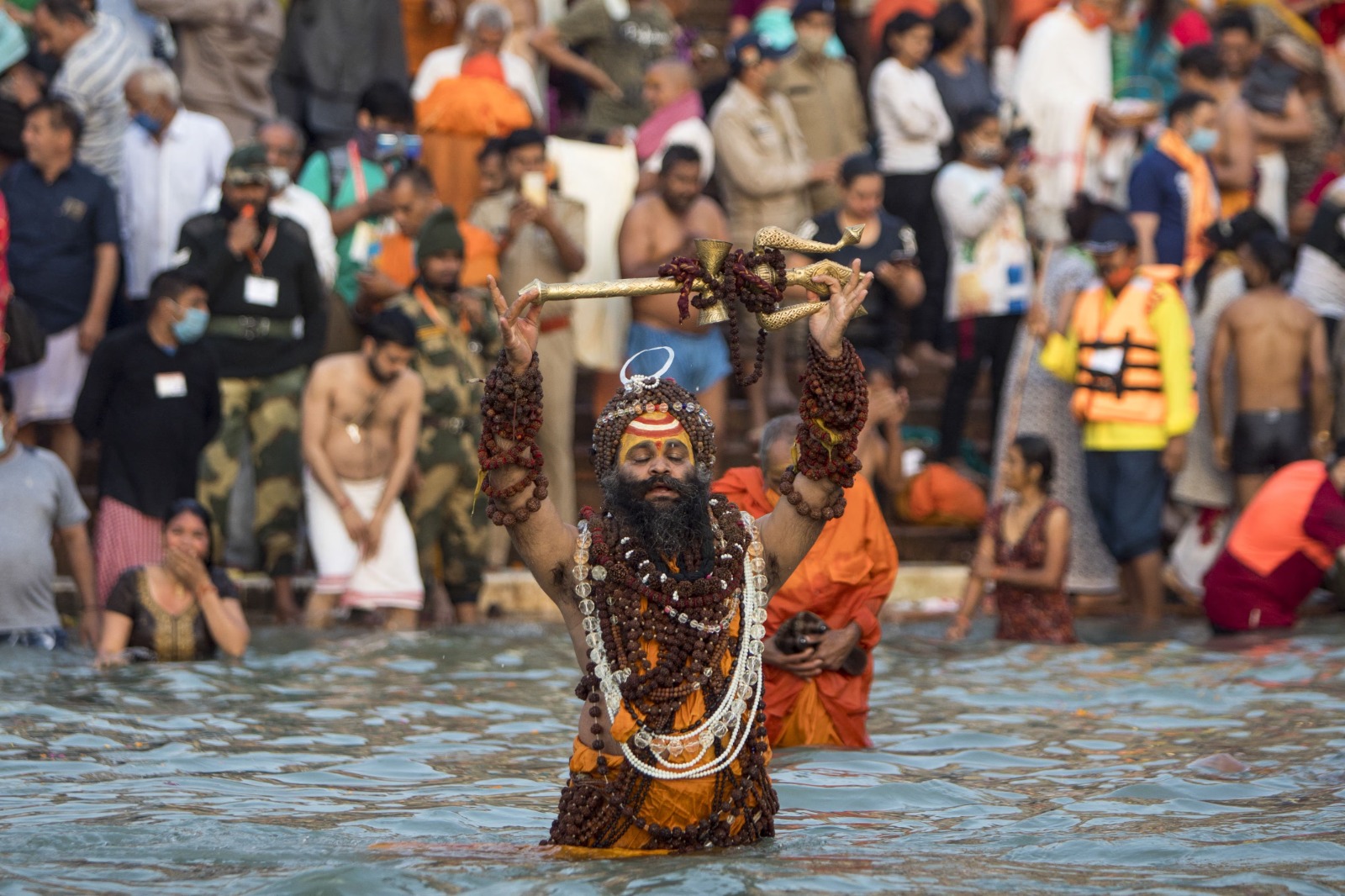
Image 2: Devotees taking holy dip in the waters of Rishikesh
A tirtha-yatra is often corroborated with holy baths in water bodies as a symbolic purification ritual. Religious fairs have seen a mass congregation of pilgrims during a particular astrological conjunction for a holy dip in the rivers. A bath in the Ganges, for instance, on the full-moon days of Asadha, Kartika, Magha, and Vaisakha brings punya whilst one acquires sanctity on the seventh of the bright-half of Magha, on Amavasya, on Akshaya Tritiya.
Ritual bathing gained impetus during the early medieval period, with the changing socio-economic dynamics. The earliest epigraph to the performance of the ritual of bath and then the gift of the village is referred to in the Nasik cave inscription of Ushavadata. The ritual of providing gifts/dana was considered obligatory since the later Vedic period, and it was also the major source of livelihood of the Brahmanas. But, with the decline of the alleged ‘Golden Age’ (i.e., post-Gupta age), urban cities were deserted and new modes of gift/dana paved their way. R.N.Nandi opines that dana during the early medieval period was used as a “weapon” with which the Jajman “destroyed his sins,” or impurities, after taking a holy dip in sacred rivers, or by undertaking a pilgrimage. This cycle of gaining punya (merit), papanasana (destroying sins) and finally attaining pavitrata (piety) helped ritual bathing gain momentum in Hindu tradition and culture.
Vijay Nath observes that the significance of bathing as an essential ritual accelerated from the forces of regionalism since the 4th-5th centuries, as borne out of the Puranas. According to Matsya Purana, Ganga is sacred in Kankhal, the Saraswati in Kurukshetra but the Narmada in all places where she flows. Further, it is also cited that a 3-day bath in Saraswati purifies a man, Yamuna takes 7 days, but Narmada purifies a man in a glimpse, and bathing in it yields unparallel merit. All this was due to a sense of regional loyalty and pride.
Society & Ritual Bathing in Hinduism
Social hierarchy in early Vedic society was believed to have been divinely ordained. The Brahman was a man’s mouth; his arms were made of the Kshatriya; his thighs were the Vaisya; from his feet, the Sudra was born. In this background rose the religious vogue of ritual baths as it provided for the salvation/ moksha of all, irrespective of caste, creed, religion, or sex, as mentioned in Vamara Purana.
Ritualism was a construct of Manusmriti, that called for Dharma or morals. Dharmasastras recognize Shudras as the very essence of pollution, as also testified by Fa Hein, the Chinese traveler to India, who explained how the Candalas had to give a heads up in a public place by striking a piece of wood to avoid contact with others. Purification of touch by a Sudra involved taking a cleansing bath. The Manusmriti also explains how food cooked in water, offered or touched by the Sudras, were considered polluted. Other than that, women, during their menstrual cycle and postpartum, were identified as polluting regardless of their caste. Water was accepted as a medium to nullify all these forms of pollution.
Holy Baths in Hinduism: Festivities & Fairs
The Ganges is the holiest of all the rivers and has purificatory functions. Mythologically, Ganga descended to earth to revive 60,000 sons of King Sagara, who were turned to ash by the curse of Sage Kapila when the former disturbed his meditation. To allow a smooth flow, Lord Shiva allowed her to descend on his head.
The Gangavataraṇa is celebrated as Ganga Dussehra and bathing in the river during shukla-paksha is believed to cleanse the sins of ten lifetimes. Another is the festival of Chhath Puja, famous in the state of Bihar, which is incomplete without a dip in the holy Ganges. The grand Ganga Aarti of Rishikesh, Haridwar also witnesses millions bathing in the water and receiving boons from the Goddess herself.
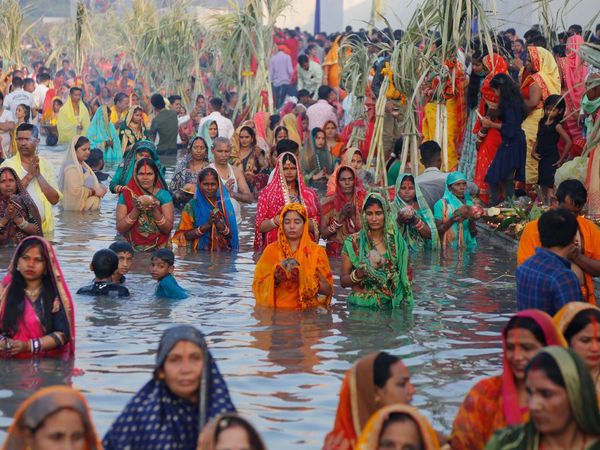
Image 3: Devotees taking a holy dip during Chhath puja
Two humongous fairs of ritual bathing are Kumbh Mela and Ganga Sagar Mela.
Kumbh Mela is the largest religious bathing (Holy baths) congregation on earth, attracting millions of tourists. It is celebrated at four different pilgrimage sites: Haridwar, Prayagraj, Ujjain, and Nasik, usually at twelve-year intervals. The first recorded account of the Kumbh Mela is found in Hiuen Tsang’s travelog through his graphic portrayal of a bathing festival. According to verses in various Puranas, bathing at the Triveni-Sangam during the month of Magha is as rewarding as donating a crore cow, performing Asvamedha yajna, and visiting ten crore tirthas, respectively. Whether it is in the shahi snan (royal baths) or other bathing days, the ghaṭs are almost always filled with bathing people.
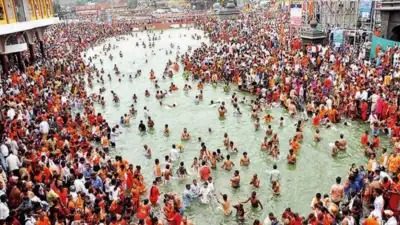
Image 4: Devotees taking a holy dip at Kumbh Mela
Gangasagar Mela is celebrated each year on Makar Sankranti (mid-January) when devotees congregate here for a sacred dip at the confluence of the river Ganga and the Bay of Bengal. Gangasagar is associated with salvation goals for two pertinent reasons: because Sage Kapila performed tapas here and was a teacher of moksha shastra, and because the sons of Sagara attained moksha from this place. Ancient texts also regard Ganga as swarga-sopana-sarini (flowing ladder to heaven), and those who dip in her holy waters are helped to cross over the ocean of life.
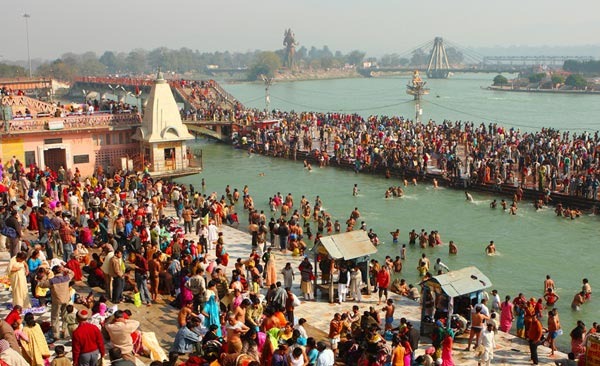
Image 5: Devotees at Gangasagar Mela
Ecology and Ritual Baths
Religious activities like the immersion of flour, oil, soap, ash, detergents, floral offerings, and mass bathing are one of the important causes that affect the water quality of a river. They also do ‘aachman’ (drinking water) on occasions like solar eclipses and new moon days irrespective of thinking about the water quality of the aquatic bodies.
Substantial increase in the values of conductivity, TDS, turbidity, BOD, total alkalinity, total chloride, total hardness, and total nitrate were observed at most of the sites after the mass bathing or other ritual activities. The religious offerings lead to high organic matter and may increase the chloride and nitrate contents. An increase in the chloride may further be responsible for upgradation in the values of TDS and total hardness after the pilgrim’s activities, along with an increase in total alkalinity due to the presence of basic salts of potassium and sodium along with those of calcium and magnesium.
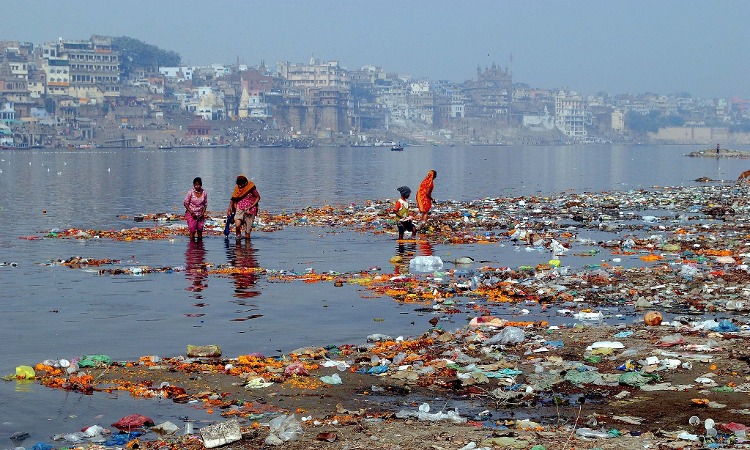
Image 6: Water pollution after performers completed their rituals
According to WHO, about 80% of all diseases in human beings are caused by water; therefore regular monitoring of such water bodies is very essential for physicochemical and microbiological analysis to know the usability and check the outbreak of diseases, plus prevent the water from further degradation.
REFERENCES
- Arya, S. N. “GROWING SIGNIFICANCE OF THE RITUAL OF BATH (A.D. 300-1200).” Proceedings of the Indian History Congress, vol. 61, 2000, pp. 165–68. JSTOR, http://www.jstor.org/stable/44148093. Accessed 21 July 2023.
- Paul, Sanchita. “ Holy Baths as Attractions in Religious Tourism: A Study of Ritualistic Bathing Fairs in India.” International Journal of Religious Tourism and Pilgrimage, Vol. 10, Issue 2, 2022.http://arrow.tudublin.ie/ijrtp/
- Pinto, Elcy. “Hindu Perspective on Water.” https://standrewscollege.ac.in/wp-content/uploads/2019/11/Cardinal-Paul-Poupard-2011-Hindu-perspective-on-water.pdf
- Chattaraj, Arpita. “ Sacred Water and Cultures of Worship: Some Observations on the River in India.” https://journals.lapub.co.uk/index.php/HB/article/download/2147/1572
- Bhatnagar, Anita; Devi, Pooja, and George, M.P.. “Impact of Mass Bathing and Religious Activities on Quality Index of Prominent Water Bodies: A Multi Study In Haryana, India.”International Journal of Ecology, Vol.2016.
IMAGES
- Image 3:
- Image 4:
- Image 5:
https://www.india-tours.com/fairs-and-festivals/gangasagar-mela-festival.html
- Image 6:
- April 18, 2024
- 22 Min Read
- April 18, 2024
- 5 Min Read
- April 3, 2024
- 10 Min Read




